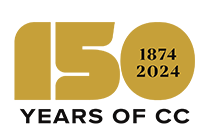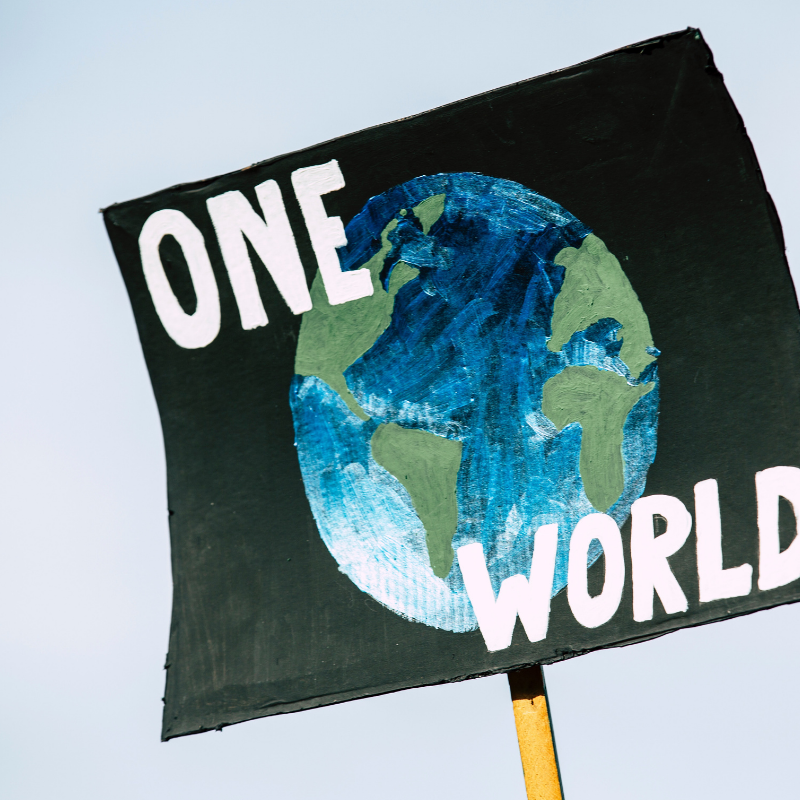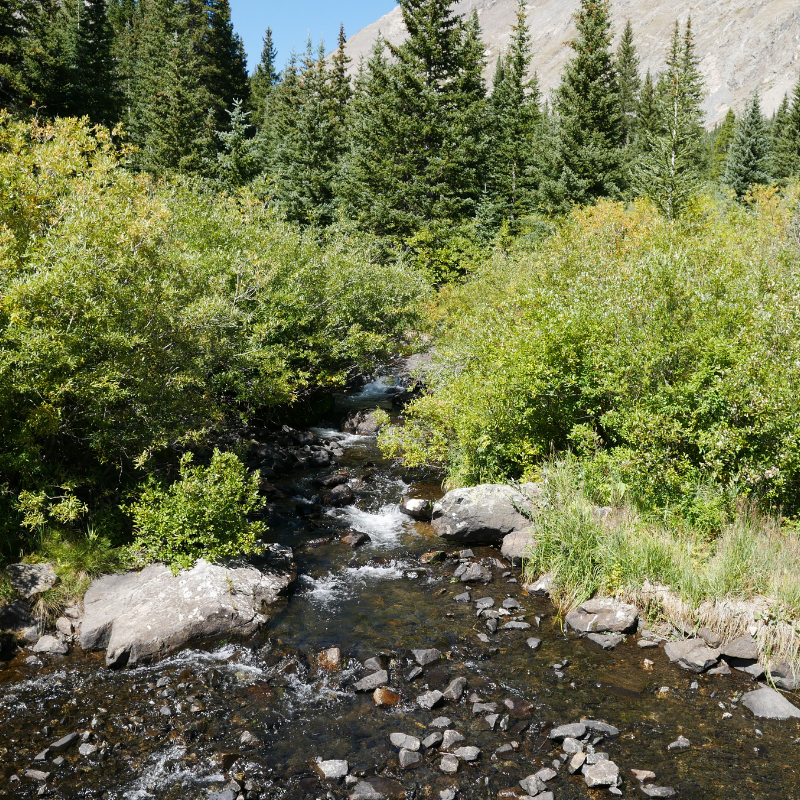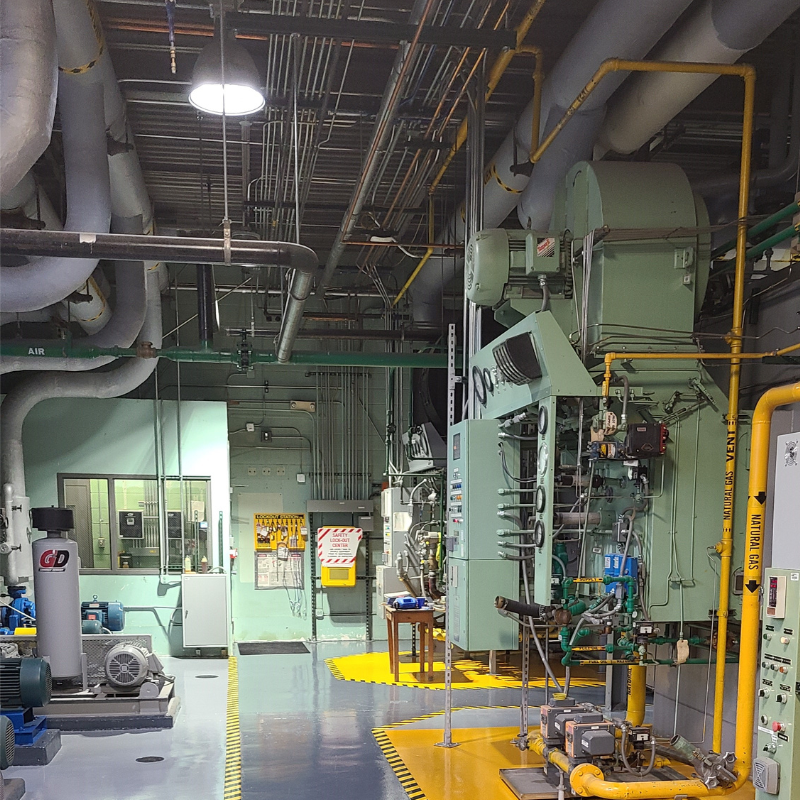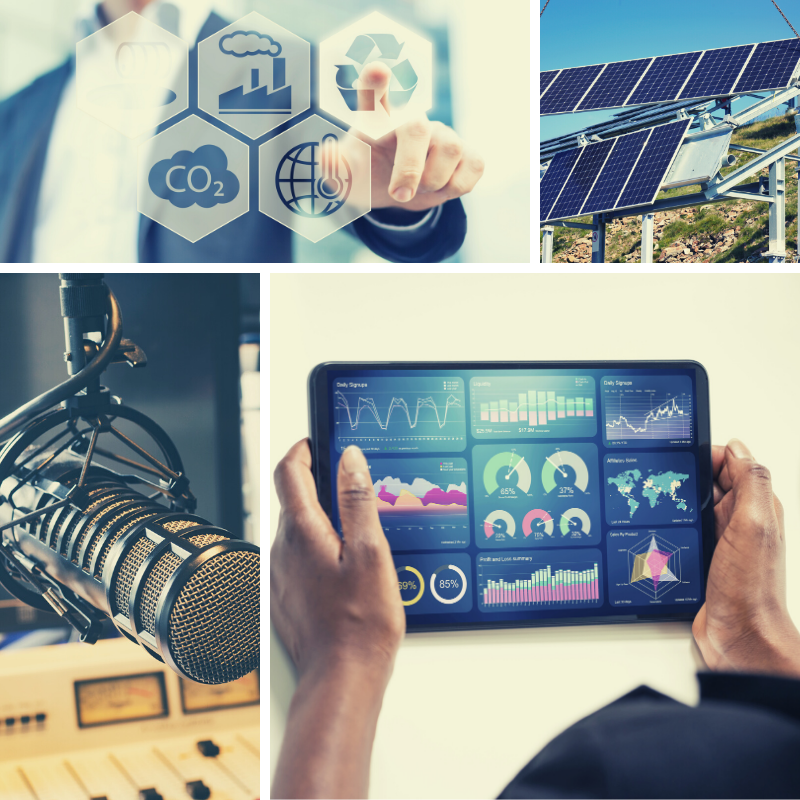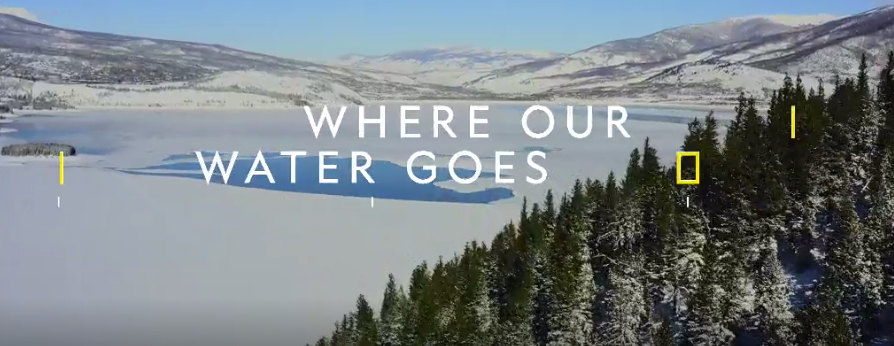Water is Life...and Other Sustainability Goals
As we noted in our Block 1 article "Why Sustainability is More Relevant Now Than Ever," 2020 is a monumental milestone for Colorado College - this is the year we achieved our goal of carbon neutrality. That achievement has far-reaching implications across all of the United Nations Sustainable Development Goals (SDGs). In that spirit, we continue to highlight work across CC that is happening every day to impact the goals. This work is sometimes easily understood as sustainability work, but just as often it doesn't appear to be directly related without a broader understanding of the SDGs and of how they are linked.
For Block 3, we'll examine work at CC that relates to water. From access to clean water (Goal #6) to water pollution that affects aquatic species (Goal #14), many of us inherently understand that water is a core sustainability issue. But probably fewer of us could articulate how water issues impact education (Goal #4), inequalities (Goal #10), good health and wellbeing (Goal #3), peace and justice (Goal #16), and sustainable cities and communities (Goal #11), among others.
To help make these connections, we reached out to Professor Eli Fahrenkrug. Professor Fahrenkrug is in his fourth year at CC, teaching in the Chemistry and Biochemistry Department. He has quite a few research projects in the works that relate to the SDG's, including his recent article co-published with Dr. Paul Buckley that assessed the impacts of framing his analytical chemistry course from the social perspectives of the Flint, Michigan, water crisis and the Fountain Valley Water Project - a nonprofit, non-partisan research group founded jointly with Professor Tyler Cornelius in 2017. His interest in applying analytical chemistry to water issues came, as he explains, after he "kept reading about perpetual water quality issues plaguing nearly a quarter of humans on the planet. I just couldn't understand it. We can send humans to the moon but we can't provide clean water - even in our own country?"
Professor Fahrenkrug has a full teaching schedule this semester, but we were able to corner him long enough to discuss his projects and inspiration, as well as connections he sees between his work and to sustainability and the SDGs. Our conversation shed light on yet another way that sustainability work is happening across campus and the importance of highlighting that work.
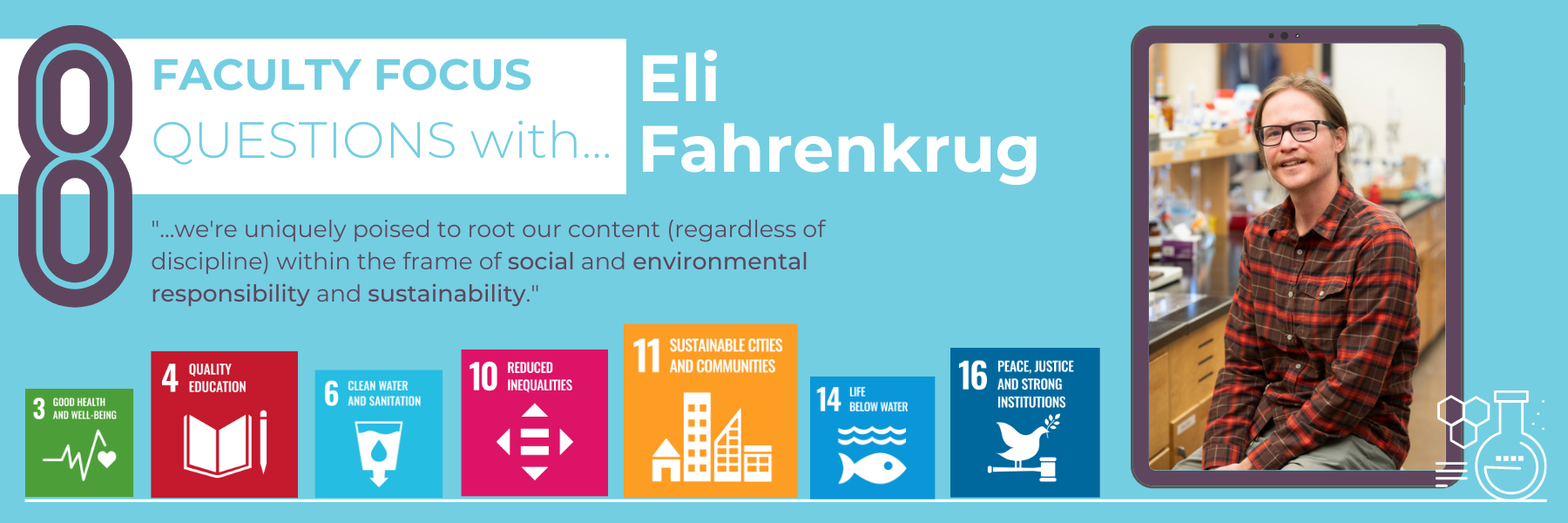
1.
What
pedagogical
changes
do
you
see
on
the
horizon
in
your
discipline
related
to
sustainability
concepts
and
issues?
At CC, I teach within the Analytical Chemistry subdiscipline, which relates to the measurement of chemicals and compounds in the world around us. Many of the tenets of sustainability implicitly inquire about 'how much' of a particular chemical you have - that might be carbon dioxide in the atmosphere as it relates to climate change, heavy metals in drinking water and their disproportionate impacts on certain communities, or key medical diagnostics and their impacts on healthcare access - the technical metrics for evaluating and understanding these tenets are borne out of analytical chemistry concepts.
At the same time, there is a deep and often intentional divide separating access to scientific knowledge and diagnostics from communities and citizens. We saw this in Flint, and we continue to see this in communities across the US. Persons and institutions capable of acquiring scientific information through measurement can wield that power over citizens who do not have access to those tools. In that way, I see confronting the realities of racism, white supremacy, and environmental justice as critical to the courses I teach. I think and hope this is the pedagogical direction my field is shifting toward.
2. What research related to the theme of water are you working on or have you worked on in the past?
The general scope of my research centers on developing new platforms by which the practice and interpretation of chemical diagnostics can be made broadly accessible to all people. There are a number of active projects in the lab at the moment in this vein. The most developed project is probably the creation of truly low-cost, open-source sensors of heavy metals in drinking water. In low-resource settings, meeting the need for high-quality environmental chemical testing requires overcoming challenges of harsh transportation and storage conditions, non-technically trained users, limited infrastructure for support and maintenance, and an economy that cannot afford expensive solutions. In the last three years we invented and developed a disruptive sensor technology that can rapidly and accurately quantify lead in water for less than 10 cents per test. The sensor works in conjunction with a standard cell phone camera. We're currently extending the technology to apply to a wide variety of water contaminants. The technology is open source, so we aim to distribute sensors widely in partnership with other organizations.
The Fountain Valley Water Project is a nonprofit, non-partisan research group started by Professor Tyler Cornelius and I in 2017. Organized as a citizen-science initiative in response to a local water pollution problem, the FVWP assists local residents in understanding and responding to a decades-long exposure to per and poly-fluorinated chemicals (commonly referred to PFAS). PFAS are a class of compounds that produce negative human health outcomes when ingested through drinking water. In 2016, the residents of the Fountain Valley (a mostly residential area just south of Colorado Springs) learned that for decades they had been drinking from an aquifer polluted with PFAS from a firefighting foam used on a local military base. While the local water districts in the Fountain Valley eventually stopped the PFAS exposure in public water systems, those with private wells remain in danger of additional exposure. PFAS, often called the "forever chemicals," do not break down in nature, and so they remain a significant concern for the affected community. CC students involved with this project have made amazing contributions thus far which include supporting grassroots organizing in the community, providing over $40,000 worth of free water tests, creating custom water reports for individuals, producing a nationally distributed and award-winning podcast, and presenting to community members. So far, we've aggregated three years of water quality data in this community that will help us understand how these compounds are moving through people and in the environment over time.
3. What do you see as key sustainability challenges and how do you recognize and address these in your research?
I see inequity as the fundamental sustainability challenge - it's really difficult to imagine solutions to many of the other challenges without first acknowledging and addressing the inequity that undergirds them. In our research, every problem we approach is from the vantage of reducing inequity. That often manifests in water quality-related work which I've discussed. But another significant thrust of our work is focused on the fundamental understanding of how crystals of active pharmaceutical drugs grow. The sustainable impetus there is that large drug manufacturers monopolize this portion of the drug manufacturing process under the veil of proprietary techniques. That makes drug prices more expensive and limits their availability. We aim to fundamentally describe the process to make it more efficient and widely available. This work is the focus of a recent American Chemical Society grant.
4. How would you connect some of the SDG's to your research/coursework?
On the first morning of a new General Chemistry course, I always start by asking students to reflect broadly on what they individually perceive as their generation's 10 most pressing problems. After creating an individual list, they [eventually] share with the class. I collect the common themes and then we collectively discuss how each of these problems relates to chemistry (they all do). Compositions of the lists almost always capture a significant portion of the 17 SDGs. What I like about this exercise is that instead of me telling the students they should care about these themes; they are given agency to pattern their understanding of a sustainable world and its challenges directly on the abstraction that is chemistry.
In other courses, I'm more explicit about engaging these sustainability areas. Over the last few years, I've worked to change the structure of my Analytical Chemistry course (AC241) to be taught through the lens of the Flint, Michigan, water crisis. The case study aims to center the concepts of a traditional analytical chemistry course directly within the broader social and political framework in which the chemical problems naturally exist. In this way, chemistry students are introduced to the larger socioeconomic and racialized structure that undergirds many fundamental problems in science. And with respect to sustainability, it specifically engages the goals of clean water and sanitation [Goal #6], reduced inequalities [Goal #10], good health and well-being [Goal #3], and peace, justice, and strong communities [Goals #11 and #17].
My primary research goals are directly aligned with clean water and sanitation, but the arc of our work is really aimed at reduced inequalities. Our goals have always focused on providing access to scientific tools and information to individuals and communities that otherwise would not have that access. Much of my work before CC was focused on developing new technology to produce cheap solar materials like silicon. I still continue that work through collaborations today. So, my research also directly ties in with climate action [Goal #13] and affordable and clean energy [Goal #7].
5. Where did your initial interest in water come from and why is it important to you to research it?
As a graduate student just down the road at the University of Michigan in 2014, I helplessly watched the Flint, Michigan, water crisis unfold in front of me in real time. For almost two years, large portions of a historically oppressed community were exposed to elevated levels of lead in their drinking water. With limited training and resources for chemical testing, most community members were left trusting data collected and interpreted by a state regulatory authority tasked with protecting the interests of its citizens. Unfortunately, that very entity was later confirmed to have knowingly misrepresented data and misled citizens to avoid costly infrastructure repairs at the expense of the health and livelihood of nearly 90,000 humans. The case of Flint is not a unique one.
6. Do you have a favorite research project that you are particularly proud of that focuses on one SDG or connects many of the SDGs?
Right now, I'm most proud of our pedagogy work incorporating power and equity into the analytical chemistry curriculum. This took a lot of imagination and effort. It pushed my own limits of comfort and helped me grow as a teacher. And I think it serves as one of the first models in the chemistry pedagogy literature that can be used to create and build other courses around. The case study is going to be included in the next edition of the most widely published analytical chemistry textbook - so the audience potentially using this work is broad. The interest started years ago, but really grew into what it is now through a wonderful collaboration with Dr. Paul Buckley which started shortly after I joined CC in 2017. We worked together on imagining and developing the Flint project. He brought his knowledge and enthusiasm into my classroom. He asked questions and made connections I had never considered. And after a couple trial runs in my classes, we understood how powerful the approach was for engaging students in chemistry. We received wonderful feedback from students about how the approach removed abstraction from the discipline.
The FVWP was largely started out of coincidence. I moved to Colorado Springs in the summer of 2017. Shortly after, I was chatting with [Director of Creativity and Innovation] Dez Stone Menendez, who had also just started at CC. She mentioned a water contamination issue at Venetucci Farms. I was in the process of planning my first course at CC and I was thinking about incorporating a real water quality problem into the class. I met with the former caretaker of the farm and her family and quickly learned the scope of the problem was enormous. So, in Block 3, I had students out at the farm conducting some of the very first PFAS measurements in their wells and in the adjacent Fountain Creek. We shared the results with folks in the community and quickly realized there was a substantial community need to evaluate water quality throughout the Fountain Valley drainage. Later that spring, Dr. Tyler Cornelius used the water issues as a theme in the EV capstone course. We saw the community need and decided to respond by creating the first non-partisan, nonprofit group focused on understanding and communicating the impacts of PFAS in the Fountain Valley drainage. The projects quickly grew into a citizen science initiative that continues to serve the community.
7. Higher education institutions have a unique opportunity to promote change in society and establish a new paradigm based on research and acquired knowledge. How do you support and build knowledge and perceptions regarding environmental and social concerns that also teach competencies that are necessary to shape students' attitudes in creating a sustainable future?
This is a great question. From my perspective, courses in the physical sciences (i.e. - chemistry) often struggle to integrate concepts of diversity and sustainability directly due to the content-heavy nature of the courses. Many STEM educators and scholars have understood this necessity, but realization in their own courses has been hindered for two reasons: (1) there are few published or accessible examples of culturally or sustainability related resources to draw upon for undergraduate STEM curricula, and (2) many educators lack time, resources, or experience to develop this content on their own. It takes time and effort to reorient courses within the context of sustainability education. I try to root the technical content of my chemistry courses within the frame of environmental and social issues directly. In my Analytical Chemistry course, I teach from the perspective of water in Flint, Michigan, and the racism at the core of that problem. In my Instrumental Chemistry course, I bring students into the local community to study groundwater contamination and its impact on a community with little representation. Social concerns are at the core of so many environmental issues and chemistry is often at the core of those environmental issues. So, to me, the connection is really apparent and provides the theme for most of my courses.
8. In your opinion, why is it important that students are making connections to key sustainability issues through your coursework or research?
At a liberal arts institution like CC, I think we're uniquely poised to root our content (regardless of discipline) within the frame of social and environmental responsibility and sustainability. I think that's how students engage deeply and critically with those topics: from the vantage of how they manifest in specific, seemingly unrelated disciplines.
By Ian Johnson
Special thanks to Professor Eli Fahrenkrug


